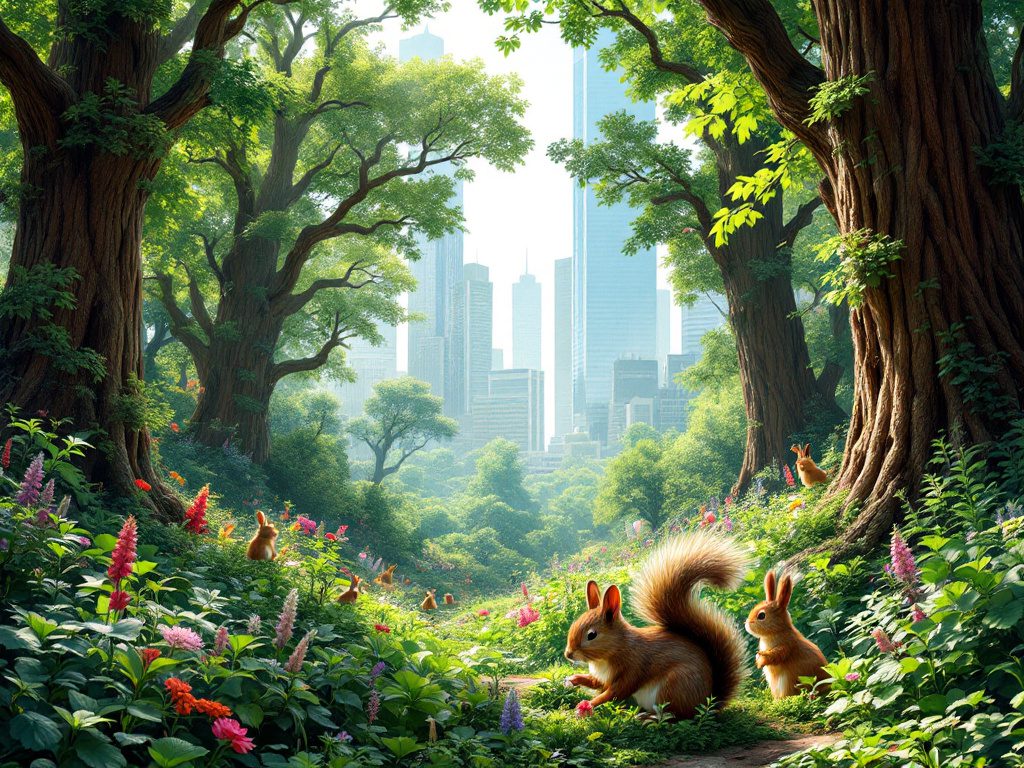Seeds of Change on Detroit’s Eastside
Amid the echoes of shuttered factories and the visual reminders of years-long disinvestment, a transformation is quietly taking root on Detroit’s eastside. On land long marked by abandoned houses and blight, towering symbols of hope are planted—giant sequoias, the largest trees on earth, native to California’s ancient forests but now finding a new home where concrete once reigned. The image alone—a sapling destined to grow hundreds of feet high—serves as a radical act of optimism in a city so often mischaracterized by its hardships.
This isn’t the work of government, but of a visionary nonprofit partnership. Archangel Ancient Tree Archive, known for their ambitious efforts to clone and preserve imperiled trees, has joined forces with Arboretum Detroit. Their goal: to cultivate the world’s first urban Giant Sequoia Filter Forest, using Detroit as both canvas and crucible for one of the most audacious experiments in environmental renewal the Midwest has seen.
It raises a question: Why sequoias, and why here? According to expert forester David Milarch, co-founder of Archangel, “Detroit is ground zero for urban restoration. With miles of vacant land and a community that knows the stakes of environmental injustice, nowhere is more ready for a project this bold.”
Sequoias: Icons of Survival Facing an Uncertain Future
Giant sequoias, with lifespans measured in millennia and trunks massive enough to swallow city block views, have stood as icons of resilience for centuries. In their native Sierra Nevada, they once seemed untouchable—shielded by thick bark, impervious to insects, and towering above most wildfires. Climate change, however, tells a different story. According to the U.S. Forest Service, more than 20% of mature giant sequoias were lost in just two years due to catastrophic wildfires, a disaster almost unthinkable a decade ago. Even the world’s most robust trees now face existential threats from the climate crisis.
The Detroit project brings a poignant twist: the saplings being planted are not just any sequoias, but clones of two legendary survivors—Stagg, the world’s fifth largest tree, and Waterfall, both of which withstood the devastating Castle Fire in California. These clones represent both genetic hope and a living memory, shared in a place hungry for new stories of renewal.
What does it mean for a post-industrial city to inherit this legacy, to nurture trees that could live for 3,000 years? Scholar and urban ecologist Dr. Summer Hallman puts it bluntly: “Planting a sequoia is an act of faith. It declares that a neighborhood once dismissed as disposable deserves beauty, oxygen, and the promise of tomorrow.”
“By bringing these ancient giants to Detroit, we’re saying city neighborhoods matter—that the benefits of healthy air, shade, and hope aren’t reserved for the wealthy suburbs. Urban forestry is a form of justice.” — Jozie Bullard, Arboretum Detroit volunteer
The Power and Politics of Urban Green
Planting sequoias in Detroit isn’t just horticulture—it’s an environmental and social statement. For decades, urban centers have paid the price for policy decisions that prioritized highways and industry over human wellbeing. Redlining, underfunded schools, and a lack of green infrastructure have contributed to Detroit’s notorious heat islands and disproportionate rates of asthma among its children. Yet projects like the Giant Sequoia Filter Forest reimagine the urban landscape as one that promotes health, equity, and resilience.
The science is unapologetically in favor of green: A 2022 study in The Lancet found that increasing urban tree canopy can lower summer temperatures by up to 5°F, reduce cardiovascular mortality, and boost psychological wellbeing. The American Lung Association links more tree cover to lower rates of asthma, especially among children of color. Beyond that, Detroit’s abundance of vacant land—often seen as a liability in political discourse—is reimagined as an environmental asset, with potential to store carbon and filter pollutants on a massive scale.
Critics on the right have often dismissed urban reforestation as impractical or a form of “green overreach,” arguing it distracts from more pressing economic development needs. But history suggests otherwise. Consider New York City’s Central Park, once derided as a frivolous luxury in the 1850s, now an ecological and economic engine. Or Los Angeles’s Million Trees Initiative—in which neighborhoods lacking green spaces gained tangible benefits in health and safety, as UCLA’s Dr. Mark Smith documented.
This isn’t merely about aesthetics. According to the EPA, urban trees play a critical role in mitigating climate change, cleaning the air, and supporting biodiversity, all while increasing property values and stabilizing communities. Against this evidence, the conservative status quo—favoring either abandonment or carceral solutions to urban decline—looks indefensible. Sprawling asphalt and neglected lots do not build safe, thriving cities; rooted, living canopies do.
A closer look reveals the project’s progressive roots: It’s not just about trees, but about young Detroiters learning to care for them, about recovering city land for common good, and about proclaiming that environmental stewardship is a matter of justice, not privilege.
The Legacy Begins—and Spreads
Detroit is only the first stop. Archangel and their partners plan to export this model to Los Angeles, Oakland, and London—other cities where disparities in green space carve deep racial and economic divides. The hope is that by rooting the world’s mightiest trees in places most overlooked, a growing movement will take hold—to restore, not just what was lost, but what was never there to begin with.
Earth Day 2025, when volunteers and children gather to plant these living giants, will be more than a photo op. It will mark the moment Detroit declared its future: one that values health, hope, and the radical belief that all neighborhoods, regardless of ZIP code, deserve clean air and a lush, living canopy overhead.

